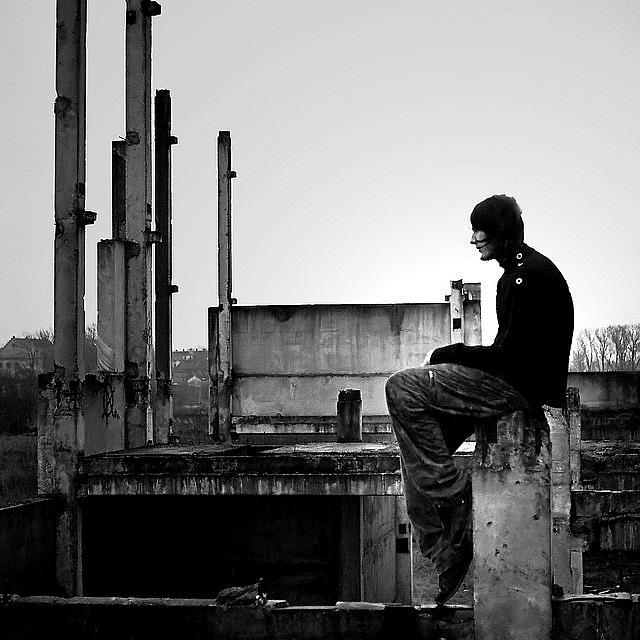Youth suicide rates offer stark reminder of rural-urban gaps

When we think of health disparities, we typically think about race or class. Often overlooked is the quieter category of geographic disparities. Yet last week provided a fresh reminder of the rural-urban divide, thanks to new research highlighting the gap in youth suicide rates.
In a study published in JAMA Pediatrics, researchers took an updated look at the numbers and found that in rural areas of the U.S., youth suicide rates tend to be double those of urban areas. Figuring out why is harder, however, since researchers aren’t always able to neatly separate out possible causes. But they do offer some general theories on what might be happening in rural areas, including less access to mental health treatment, greater social isolation, more limited economic prospects and easy access to firearms.
Using county-level data from the National Vital Statistics System, researchers looked at suicides among 10 to 24 year olds, from 1996 through 2010. They also looked at what county they lived in, and how they died. Clear patterns emerged, with suicide rates among rural youths double those of their urban counterparts. (For males, the rates were about 20 suicides per 100,000 in rural areas, compared with about 10 per 100,000 in urban zones.) Males were about four times more likely to commit suicide than females, but young women in rural areas still did so at twice the rate of their urban peers.
The rural-urban gap among young males also grew larger over the course of the years studied, suggesting the disparity is actually getting worse, the study notes. And the preferred methods of suicide differed geographically as well, with rural youths far more likely to kill themselves with firearms or through hanging or suffocation.
The data trends may be clear, but the question of what’s driving rural areas’ higher suicide rates is more complex. And here’s where the certainty of data gives way to the uncertainty of theories.
One big bucket of explanations has to do with the fact that, for rural residents, it’s often harder to obtain basic mental health care. The reasons are many. For one, rural areas typically lack mental health providers. The JAMA study includes this rather astounding fact: “[M]ore than half of all the counties in the United States (all rural) do not have a practicing psychiatrist, psychologist, or social worker.” The dearth of clinicians means rural residents often have to drive longer distances, and wait more for appointments, causing treatment to be delayed or skipped. And all these challenges are before you get to issues of stigma and rural individualism, both of which can lead to under-treatment. From the study:
Even when services are available, rural residents may not see the need for services owing to low mental health literacy or may be reluctant to use services because of the stigma associated with mental illness and the lack of anonymity in a rural environment. Rural residents may tend to value self-reliance and individualism, distrust governmental authority, and view help-seeking more negatively than urban residents.
If it’s harder to get care for mental health in rural areas, there are also some reasons why you may be more likely to need it in the first place. Social isolation has long been considered a risk factor for depression and suicide, and there’s research to suggest that rural residents who commit suicide are more likely to lack close companionship. And then there’s the economy: Rural areas tend to be disproportionately hurt by economic downturns and the loss of jobs that occurs when populations dwindle and young people decamp for the cities. “These hardships and financial difficulties can precipitate greater feelings of hopelessness, depression, isolation, and substance abuse, with all being risk factors for suicide,” the JAMA study’s authors write.
Atop all of these challenges, rural areas share another distinction that plays into the suicide stats: the greater availability of guns, which are deeply woven into the fabric of American rural life. “A compilation of December Gallup polls showed that rural Americans — roughly one-sixth of the population — are more than twice as likely to have a gun in the home than those living in large cities,” USA Today has reported.
Those guns also show up in the most recent suicide data. “For example, during the period 2008-2010, suicide rates by firearm in males more than doubled from 4.42 per 100,000 in the most urban counties to 11.87 per 100,000 in the most rural counties,” JAMA reports.
Over a decade ago, The New York Times detailed Montana’s struggles with these problems with the suggestive headline: “Social Isolation, Guns and a 'Culture of Suicide'.” More recently and far more extensively, Cindy Uken of the Billings Gazette has reported in her National Health Journalism Fellowship project how suicides and the struggle to receive care have devastated families throughout the state.
The problem’s many causes evade neat policy prescriptions. But the JAMA study’s authors suggest three ways of attacking the problem, all of which focus on improving access to mental health services and early detection. The first is the embrace of telemedicine to get the services of more mental health providers out to rural areas. The second is to offer more mental health services in the primary care setting, making it easier for people to get mental health help when they visit their doctors. The third suggestion is to put more programs in schools that screen for suicide and depression and teach kids to recognize signs of risk in themselves and others.
None of this, of course, improves the economic prospects of rural communities, nor will it suddenly make guns or other lethal means scarce in moments of personal crisis. Those are tougher nuts to crack from a policy perspective. At the same time, the latest youth suicide numbers make it clear that we need to start somewhere if we’re to keep the widening disparity between rural and urban regions from turning into a chasm.
Photo by Kristaps Bergfelds via Flickr.
